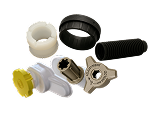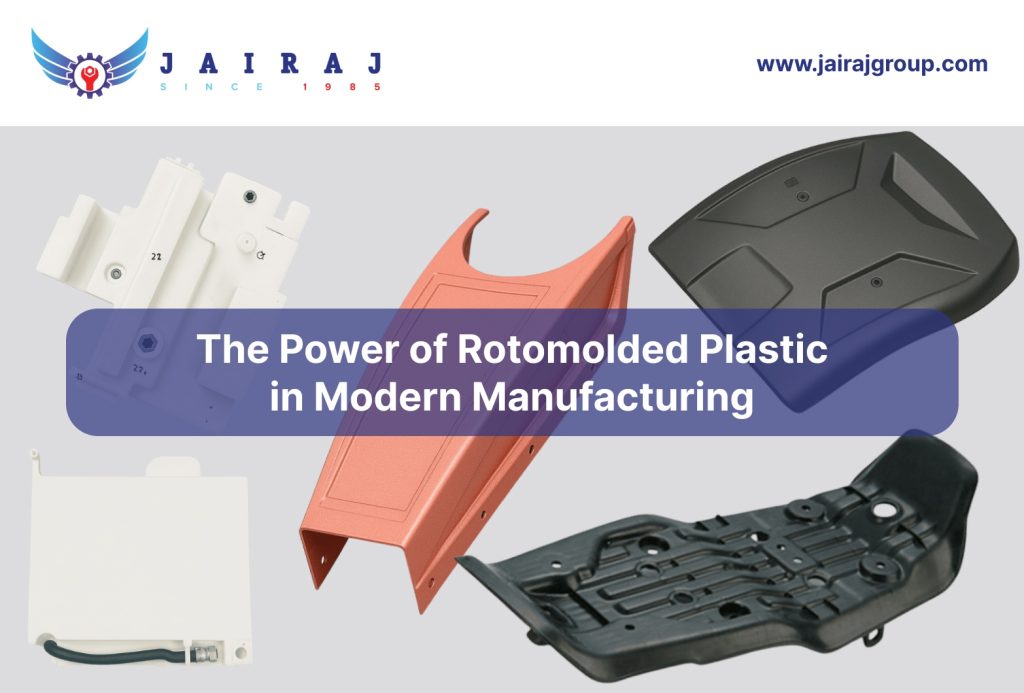Plastic injection molding is one of the most widely used manufacturing processes for producing high-volume, precision plastic parts. This advanced method is essential across multiple industries, including automotive, aerospace, medical devices, electronics, packaging, and consumer goods.
In this blog, we will explain what plastic injection molding is, how the process works, its different types, and why it remains the top choice for mass-producing plastic components with consistency and accuracy.
What is Plastic Injection Molding?
Injection molding is a manufacturing process that involves melting thermoplastic or thermosetting polymers and injecting the molten material into a mold cavity under high pressure. Once the material cools and solidifies, the mold opens and ejects a finished part.
This process can be used with a wide variety of materials such as ABS, Polypropylene (PP), Polyethylene (PE), Polystyrene, Nylon, and Polycarbonate (PC)—depending on the application. It’s also used to produce metal, glass, and ceramic parts through specialized injection techniques.
🡆 Common applications include: automotive plastic components, plastic components for railways, plastic components for defence, plastic components for aerospace, plastic components for solar industry, plastic automotive components for heavy duty vehicles.
Why is Injection Molding Used?
The plastic injection molding process is preferred due to its high production efficiency, tight tolerances, and cost-effectiveness for large-volume production. Some of the key benefits include:
Complex Shape Capability: Easily produces parts with intricate geometries.
Material Variety: Works with hundreds of engineering plastics and blends.
High Repeatability: Ensures uniform quality across thousands (or millions) of parts.
Minimal Waste: Generates very little scrap compared to other methods like CNC machining.
Scalability: Ideal for both prototyping and full-scale production.
🡆 It is particularly beneficial for businesses seeking custom plastic parts manufacturing with consistent quality.
Types of Plastic Injection Molding Processes
There are two major types of injection molding techniques depending on production volume and mold design:
1. Single-Stage Injection Molding
In this method, a heated barrel melts the plastic resin, which is then pushed through a nozzle and into an open mold using a plunger or screw mechanism. Once the part cools and solidifies, it is manually or mechanically removed. This process is typically used for low-volume or prototype plastic parts.
2. Multi-Stage Injection Molding (High-Volume Production)
This technique is more advanced and used for large-scale plastic production. The molten plastic is injected into a closed mold under high pressure. After cooling, the mold automatically opens, and the part is ejected. Multi-stage injection molding is used for mass production of precision components in automotive, electronics, and consumer industries.
🡆 Companies offering custom injection molded plastic parts often use multi-cavity or multi-stage tooling to reduce per-unit cost and speed up production.
How Does the Plastic Injection Molding Process Work?
The entire process involves a series of well-controlled steps:
Material Preparation: Thermoplastic granules are loaded into a hopper and preheated.
Injection: The melted resin is injected into a mold cavity through a nozzle using high-pressure screws.
Cooling & Solidifying: The mold is cooled using water or oil channels until the part becomes rigid.
Ejection: The mold opens, and the part is pushed out using ejector pins.
Repeat Cycle: The mold closes, and the process repeats with minimal downtime.
🡆 Modern CNC-controlled injection molding machines allow for automated, high-precision production with excellent repeatability.
Industries That Use Plastic Injection Molding
The plastic injection molding process is widely adopted across various industries due to its precision, scalability, and cost-effectiveness. It enables the mass production of complex components with consistent quality and minimal waste.
In the automotive sector, injection molding is essential for manufacturing parts such as interior trims, dashboards, bumpers, and functional components. The process is also extensively used in the two-wheeler and three-wheeler segments for producing handle grips, body panels, covers, and fuel system parts.
Engineering tool manufacturers rely on injection molding for durable tool casings and precision inserts, while earthmoving and heavy-duty vehicle manufacturers use molded parts for housing units, protective shields, and fluid management systems.
In the medical industry, injection molding is crucial for making sterile, high-precision items such as syringes, surgical instruments, and disposable casings. The consumer electronics industry depends on this process for producing enclosures, connectors, remote casings, and buttons.
Packaging companies use injection molding for items like caps, lids, food containers, and closures that require both hygiene and durability. Similarly, home appliance manufacturers depend on it for components such as knobs, trays, handles, and inner structural supports.
Emerging industries like drone manufacturing also benefit from lightweight, durable injection-molded components such as housings, blades, and sensor mounts. In the railway sector, plastic parts are used for insulation, panels, and seat components.
Solar industry manufacturers use injection molding to produce junction boxes, panel supports, and cable holders. The defense and aerospace sectors rely on the process for high-strength, low-weight parts including electronic housings, control system parts, and brackets.
Additionally, manufacturers of white goods and appliance components—including air conditioners, washing machines, refrigerators, and microwave ovens—utilize injection molding for both functional and aesthetic parts.
From small-scale startups to global OEMs, plastic injection molding serves as a foundational technology for efficient, high-volume production across multiple sectors.
Conclusion: Why Choose Plastic Injection Molding?
Whether you’re developing a new consumer product or supplying high-precision parts for the automotive or medical industry, plastic injection molding offers the perfect balance of speed, quality, scalability, and cost-efficiency. For companies seeking custom injection molded parts, this process is a game-changer that delivers consistency and performance.
If you’re looking for a reliable plastic parts manufacturer in India, consider working with experts who specialize in CNC injection molding, custom tooling, and prototype-to-production solutions.






